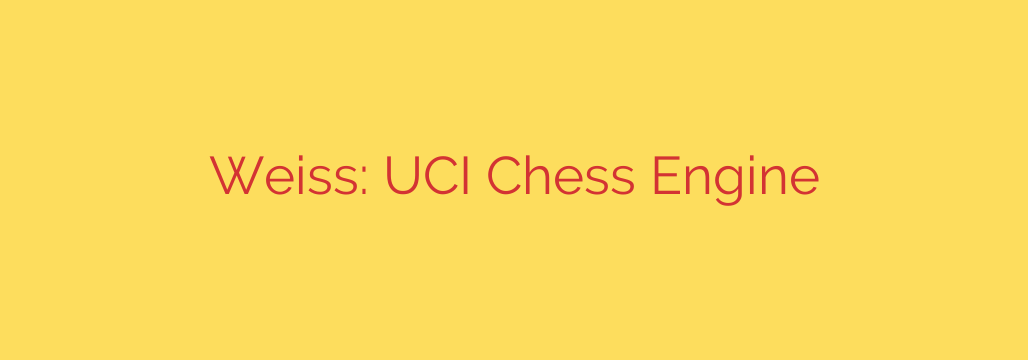
Delving into the world of advanced chess engines reveals constant innovation, and one name emerging is Weiss. This engine represents a modern approach, built upon sophisticated principles to offer powerful analytical capabilities. At its heart, Weiss is designed as a UCI-compliant engine, meaning it adheres to the Universal Chess Interface protocol. This standard allows it to seamlessly integrate with a wide array of chess graphical user interfaces (GUIs), making it accessible for users to analyze games and positions.
Key aspects of Weiss often include its underlying evaluation function and search algorithm. Contemporary engines increasingly leverage technologies such as neural networks for position evaluation, moving beyond traditional hand-tuned evaluation functions. While specific details vary, such implementations aim to capture complex positional understanding in a way that mirrors human intuition but with computational speed and precision. The search component, typically employing variations of the alpha-beta pruning algorithm or more modern search methods adapted for neural evaluations (like in Stockfish’s NNUE or Leela Chess Zero’s MCTS), explores the game tree to find the best moves.
Understanding Weiss involves recognizing its place in the evolving landscape of computer chess. Engines like Weiss push the boundaries of computational strength and analytical depth. Compliance with UCI ensures its utility as a versatile tool for anyone serious about chess study, from amateurs looking for strong opponents or analysis partners to professionals seeking deep insights into complex positions. Its development signifies the ongoing progress in harnessing computational power and advanced algorithms to master the game.
Source: https://www.linuxlinks.com/weiss-uci-chess-engine/








